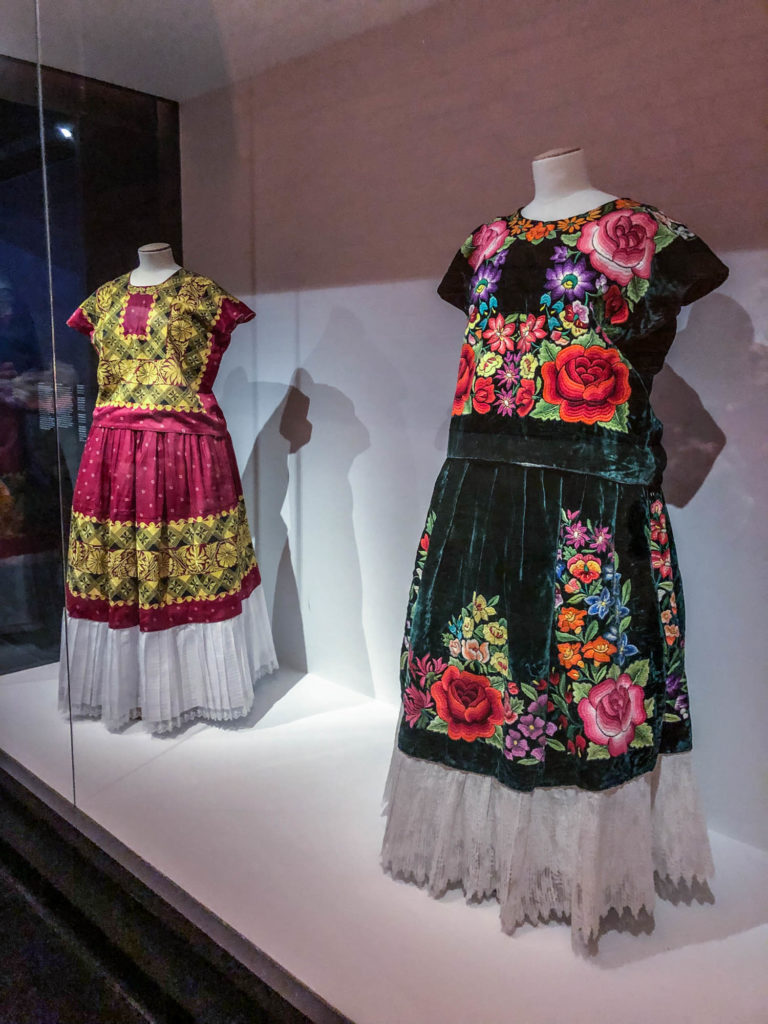A few weeks ago, I went to see the Frida Kahlo exhibition at the Musée de la Mode.
I’m going to put a lot of pictures in this post so if you want to go see it, don’t read the article to keep the surprise.
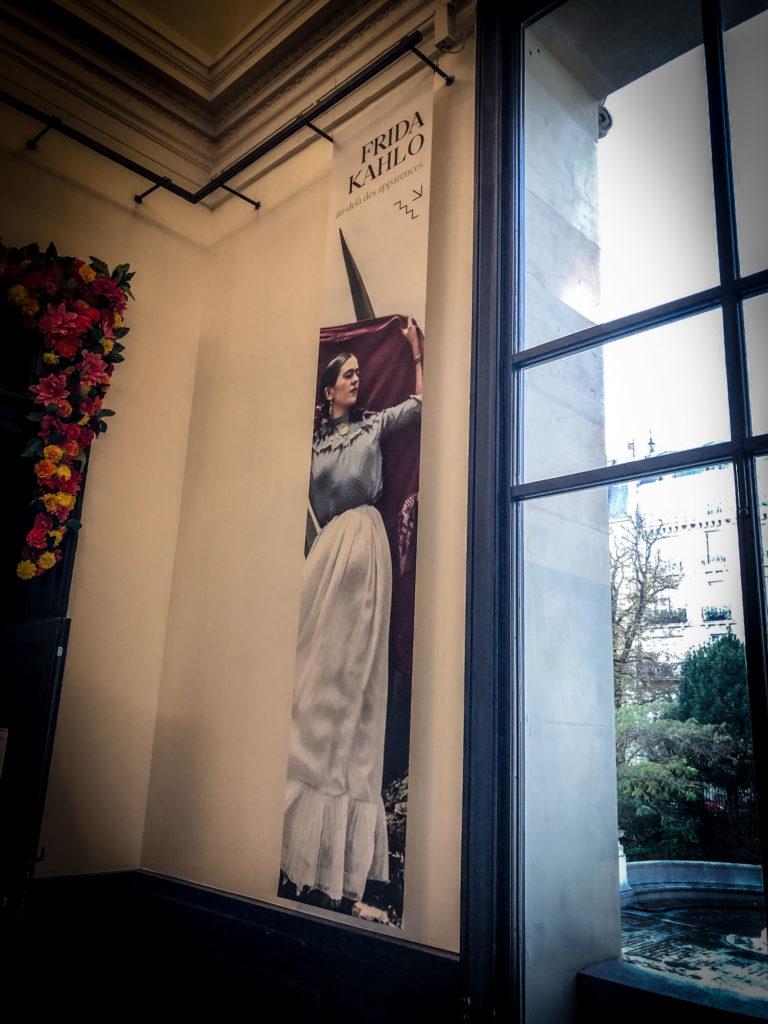
Museography and first part of the Frida Kahlo exhibition
I have a very mixed feeling about this exhibition, especially because of the choice of museography. It starts with a very very long corridor (whose architecture is magnificent) where a lot of personal documents and photos are exposed. Small videos are also shown. As you can see on the picture (I took it at the end of the corridor) the space was really not wide which made the visit quite difficult, especially since there were objects exposed on both sides.
Don’t forget your FFP2 mask, especially if you are a person at risk.
This part is mainly about Frida Kahlo’s life, her family, her terrible accident, her relationships with other artists and with Diego Rivera. There are letters, photographs, and small votive offerings. It is important to know that there are many facsimiles. In short, if the life of Frida Kahlo has no secrets for you and your goal is to see the objects that were found in 2004, you can skip this first part. If on the other hand you are not familiar with her life, you can spend some time on it. For my part, I learned a lot of interesting things.


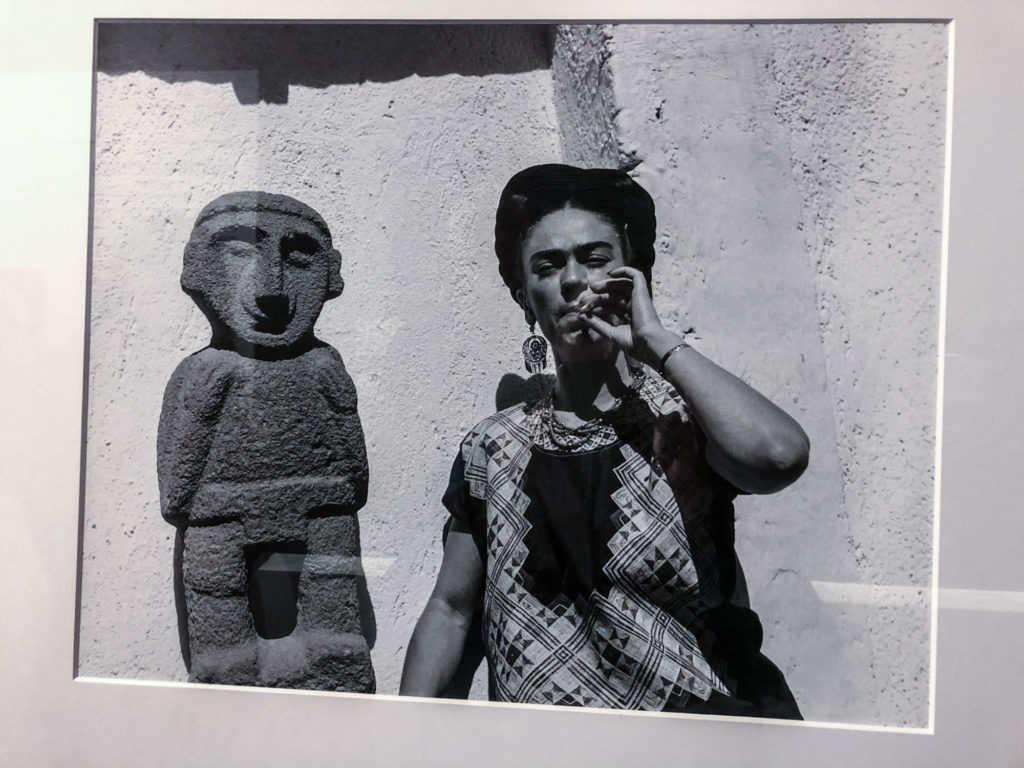
At the end of the hallway, you suddenly arrive in a large room that allows you to breathe easier. This is my favorite part of the exhibition.
Personal effects and dresses of Frida Kahlo
I must admit that it was mainly for this part that I went to see the exhibition.
When Frida Kahlo died, her husband, Diego Rivera, had her personal effects sealed in the Casa Azul.
They were rediscovered fifty years later, in 2004, which explains their exceptional state of preservation.
Frida Kahlo decorated her corsets in plaster. They were molded directly onto her body and she had to wear them for long periods of time. It was a way to keep control of her image and not suffer from her disability.



Also on display are everyday items (cosmetics, medicines etc.) as well as jewelry. I had a big crush on this little doll. Frida Kahlo loved to sew: she made small dolls, embroidered linens, mended her clothes.





In the south gallery is exposed the highlight of the exhibition: the dresses and photographs (portraits or self-portraits).

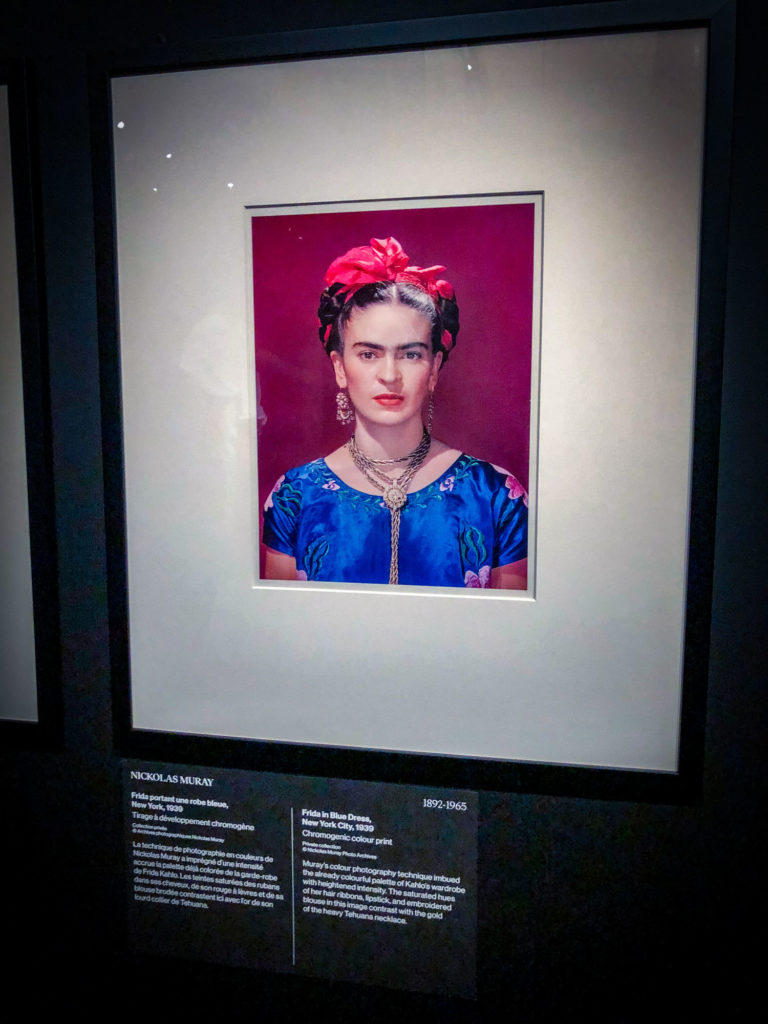

Frida Kahlo dressed unconventionally as a teenager to express her personality and to hide her leg that was damaged by polio.
Around the age of 20, she adopted the traditional Mexican dress that she would wear all her life. She was inspired by elements from different regions and eras, but especially by the matriarchal culture of Tehuantepec: embroidered blouses, long skirts, elaborate hairstyles and woven shawls. Her clothes serve to hide her injured body and adapt to her medical needs. The paint stains and other marks are a sign that she wore these clothes in her daily life and that they were part of her art and identity.
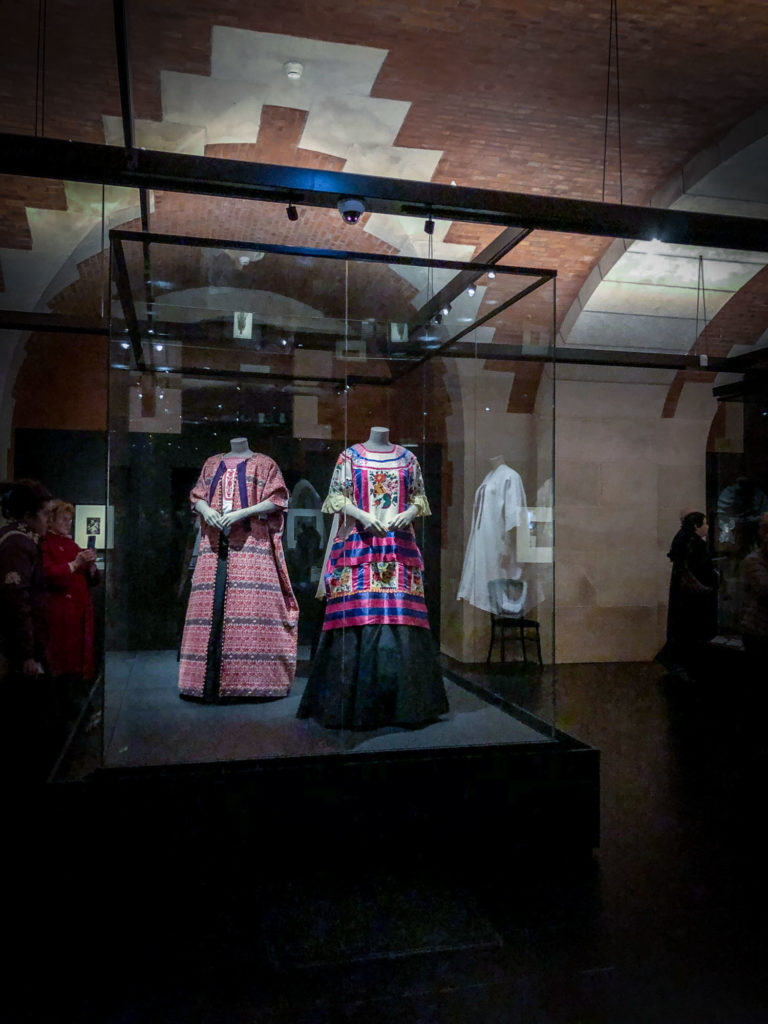


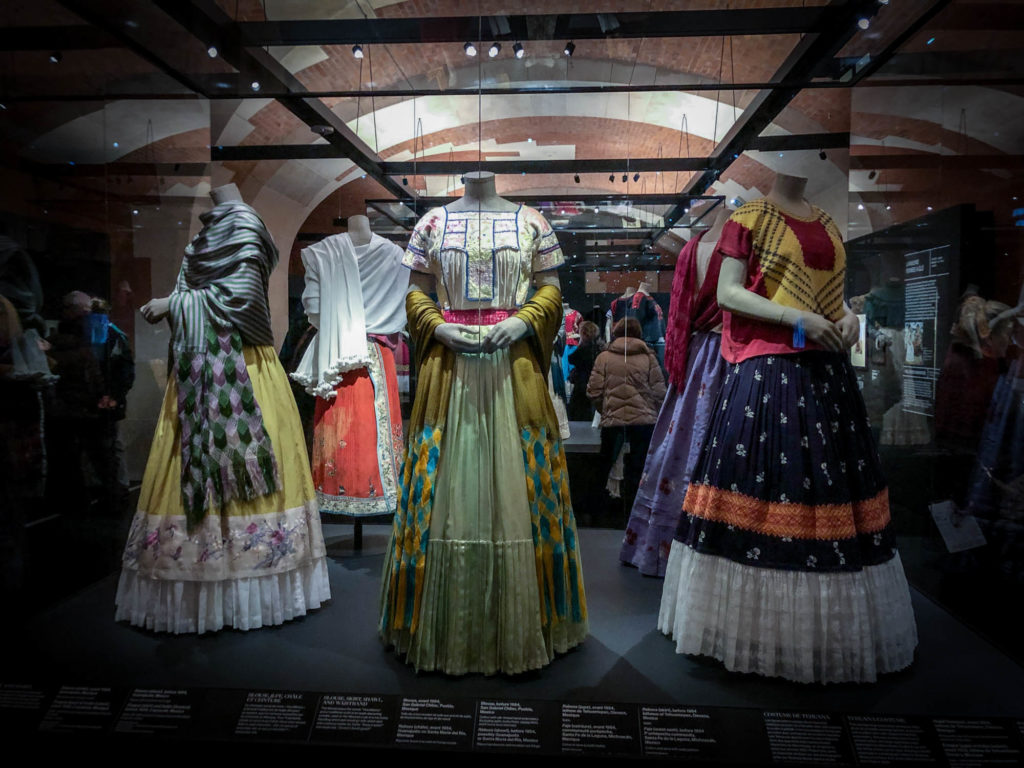
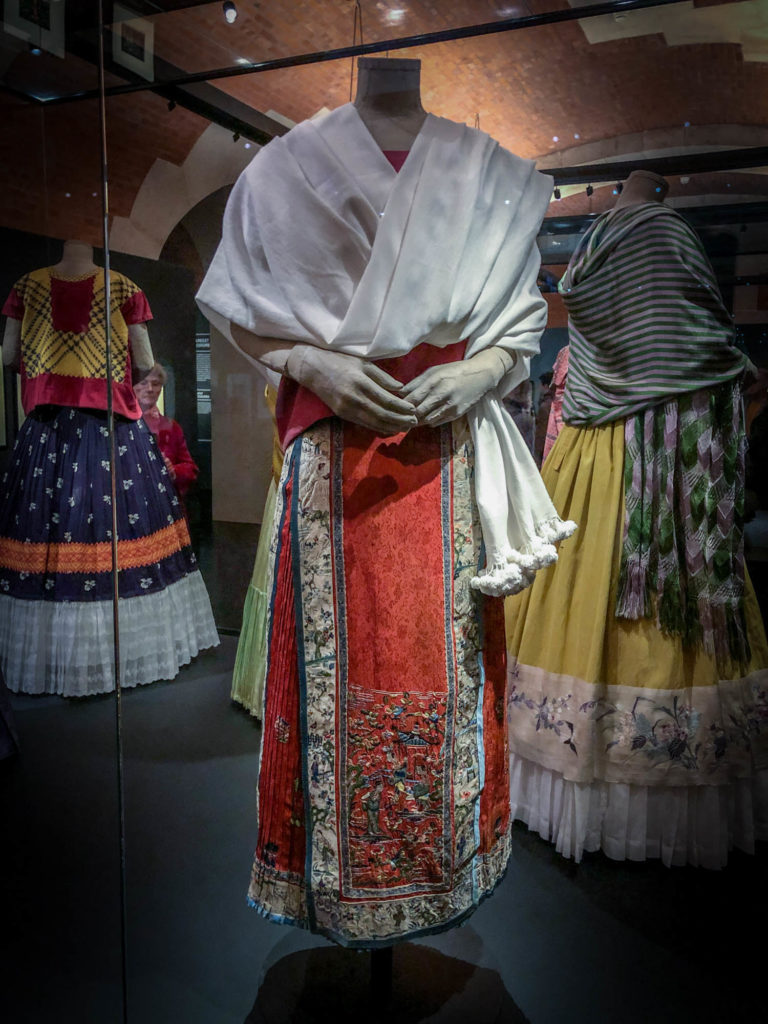
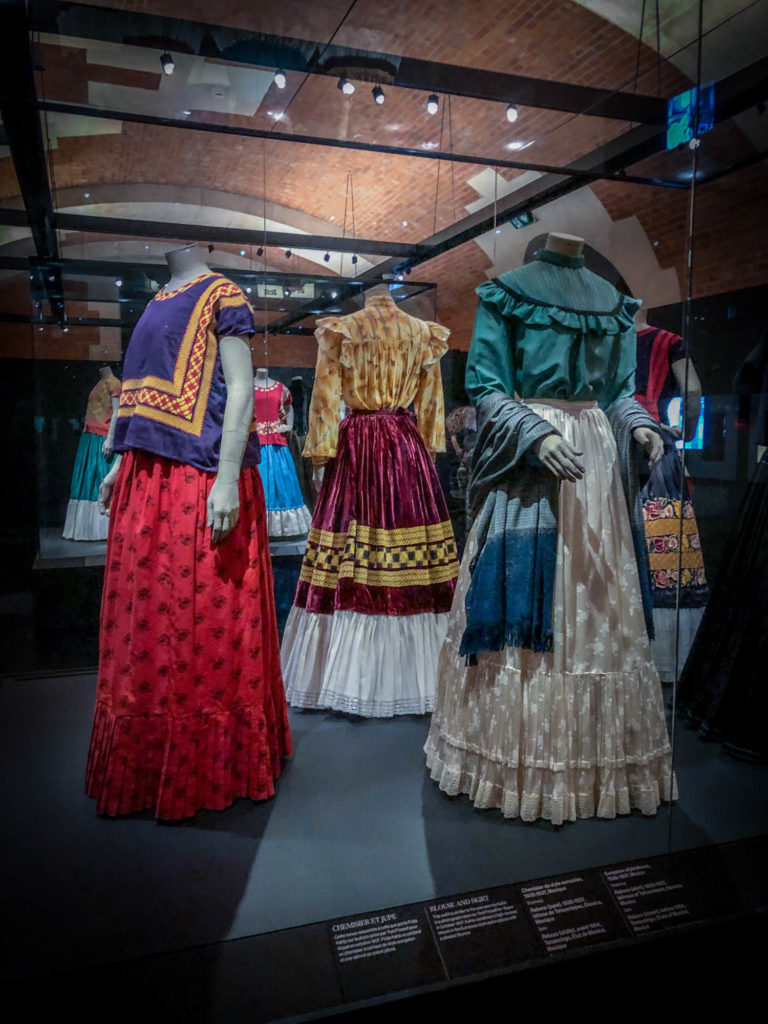
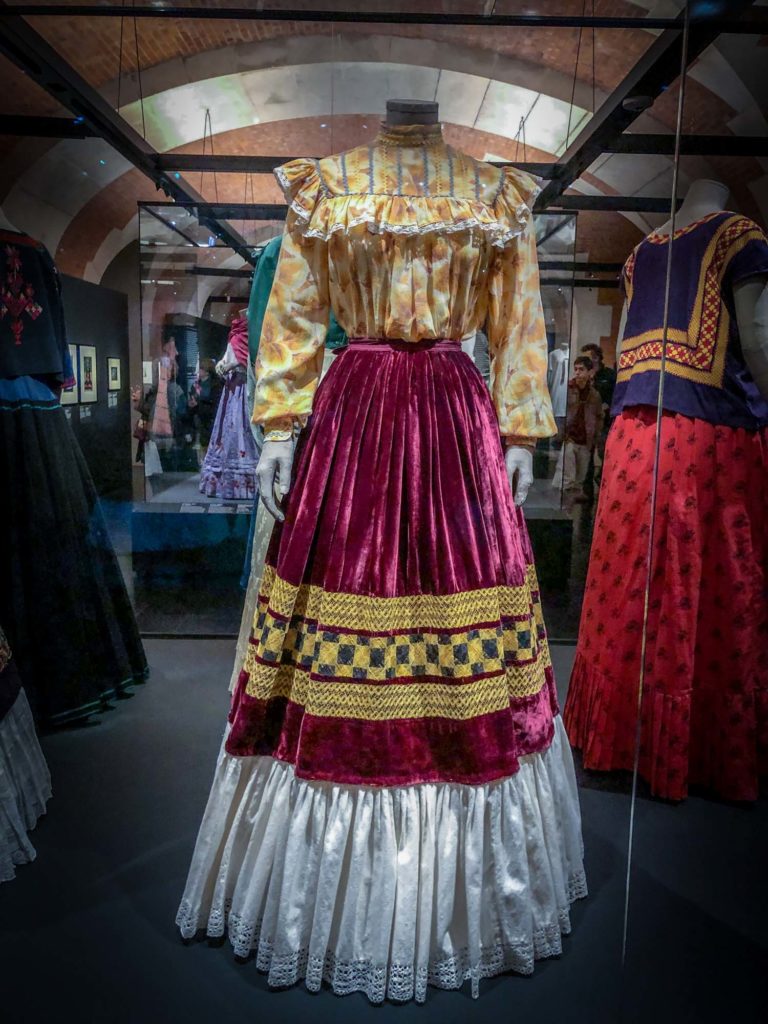


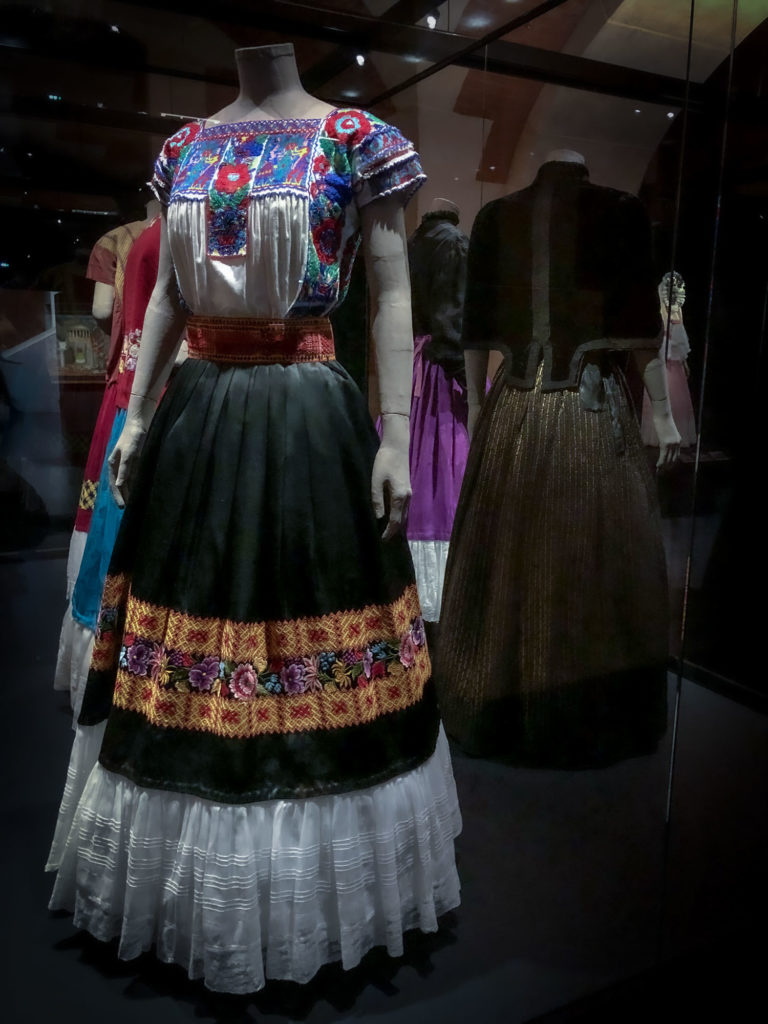

The dresses are beautifully displayed. On the walls are photos of Frida Kahlo wearing some of these dresses.
I conclude with photos of a headdress that has marked me: the resplandor. It is a lace headdress worn during special ceremonies like weddings or baptisms.
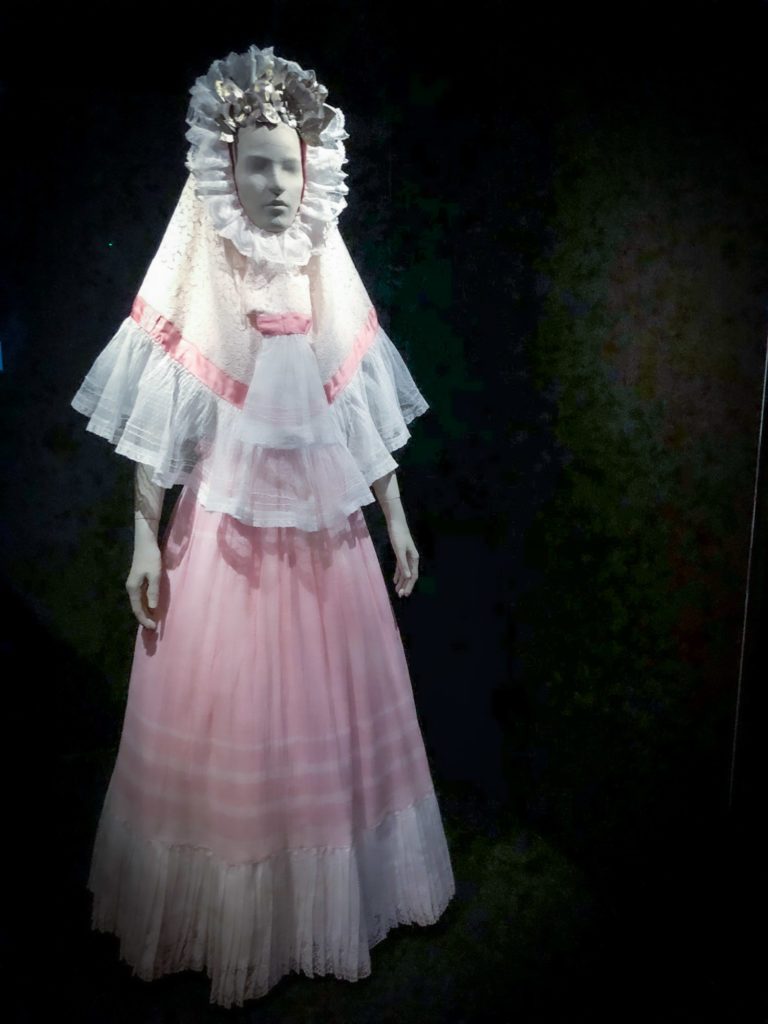

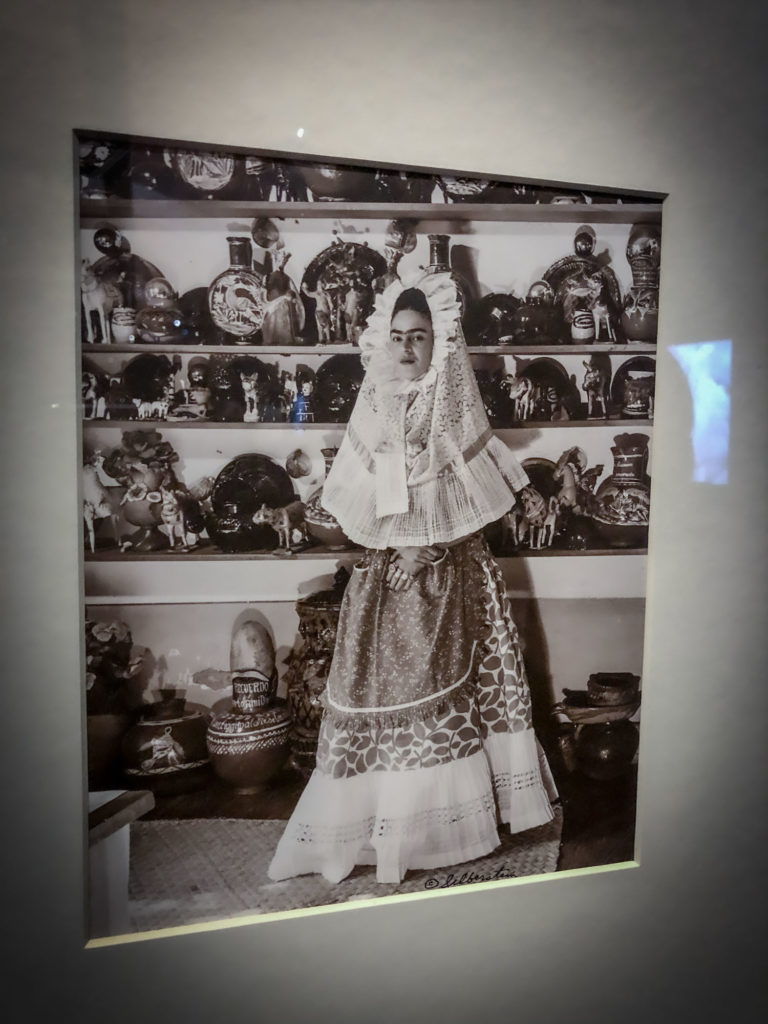
I hope this post makes you want to see the exhibit. For those who have seen it, what did you think?
See you soon!



